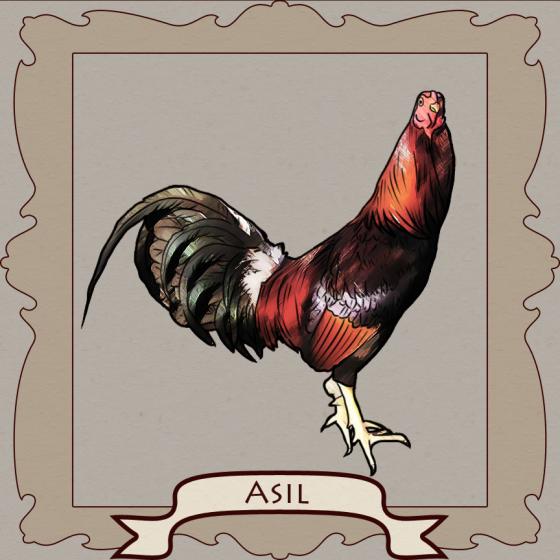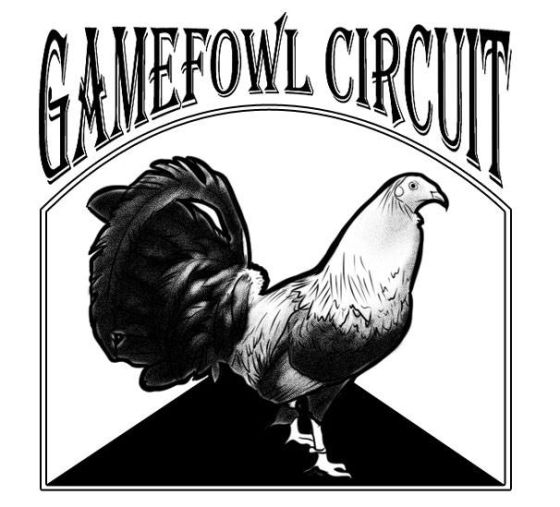Asil: Aggressive Asian Endurance Fighter

Phenotype
The Asil is a bird of sharp contours, medium-sized, with strong bones, very broad and muscular. Porte erect, fairly low above the legs. Aggressive nature in the presence of other roosters, but very gentle and noble against the human, both the cock and the hen.
Bloodline History
This kooky and unusual bird is recognized as the oldest established breed of gamefowl, having been bred in India for its fighting qualities for over 2000 years. The name Asil is derived from Arabic and means ‘of long pedigree’ pr 'thoroughbred'. In different dialects it can be spelled ‘Asil’or ‘Aseel.’
Asils
are very large roosters that weigh from 4lbs to 6lbs MAX, which is
why they are known to be powerful hitting roosters in the pit. Fighting with naked spurs alone, the Asil gamefowl can subdue another
chicken. But because they are big and heavy, they are also slow.
Asil hens are not good layers, but are excellent sitters. The small Asil (the ones usually crossed with western cocks) are known to be very poor layers, sometimes laying just 6 eggs a year, but the larger Asil (the ones that fight in India and Pakistan), can lay around 40 eggs a year.
In South Asia, it's home, the Asil was bred to fight, not with false spurs, but rather with its natural spurs covered, the pit fight being a trial of strength and endurance. The bloodline had such fitness, durability and gameness that battles could last for days. This style of fighting produced a powerful and muscular bird with a strong beak, thick muscular neck and powerful legs, together with a pugnacious temperament and stubborn refusal to accept defeat.
Mianwali
Raised in the Mianwali district of Pakistan, this is the current favorite in Pakistan as a game breed used in the pits and given top odds by
gamblers. Smaller compared to Sindhi Asils and weighing between
1.5 to 3.5 kg, at small to medium height. Speed is its forte and an outstanding head hitter. A good fighter can kill an opponent quickly, and they kill bigger roosters because of
their speed and accuracy. Color variations include Java(duckwing), Lakha (reddish), black. Very tough and aggressive, gameness like the breed is known for, but not stupid kamikaze, fights well with naked spurs or long knife gaffs.

